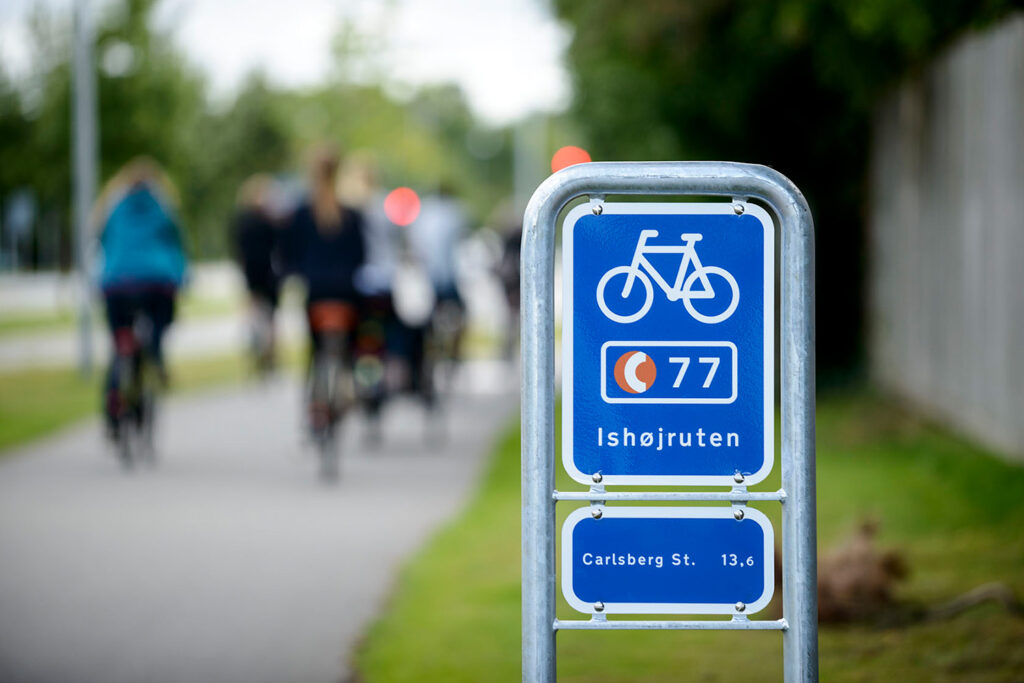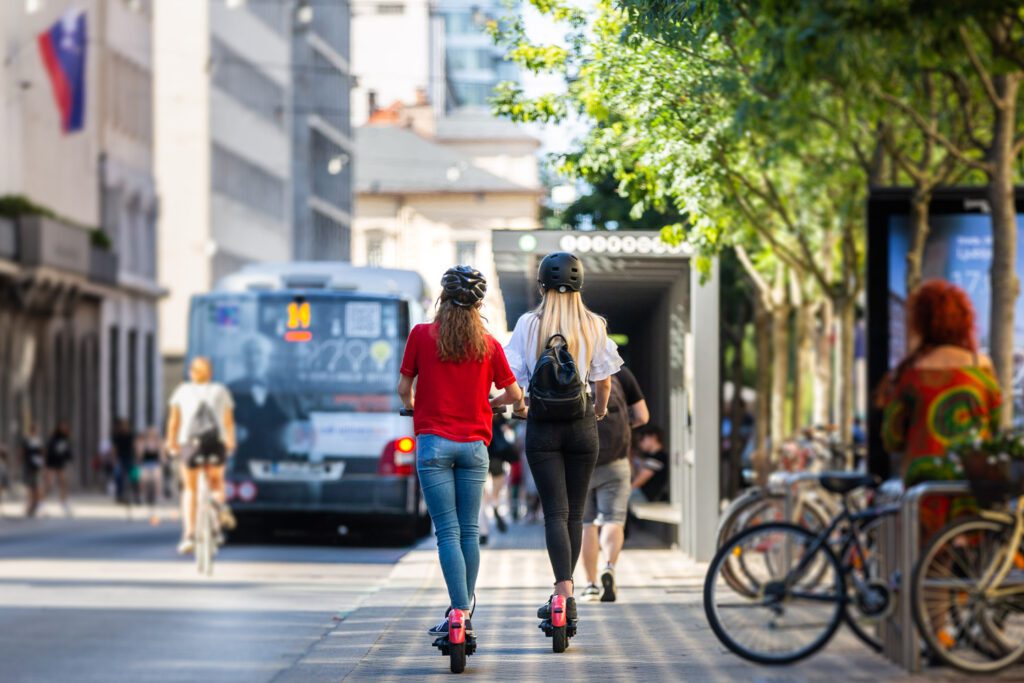The what, why and how of active mobility
Active mobility means walking, cycling, and wheeling – getting where we need and want to be while moving our bodies. It offers major benefits for health, the environment, and quality of life for people.
It is a paradox of our modern way of life that we travel more and more and yet move our bodies less and less. The World Health Organisation is calling physical inactivity one of today’s leading mortality risk factors worldwide, as it can lead to conditions such as type 2 diabetes and cancer.

Transportation not only influences the way we move, but also plays a major part in our current climate crisis. A fifth of global CO2 emissions comes from transportation and road traffic is the number-one contributor. On top of that, more than half of the world’s population live in urban areas – in the future even more will – and many cities are clogged with traffic. Space is scarce, health and pollution are major issues, and no matter how we look at it, we cannot escape the fact that we must rethink how we move around.
At Buro Happold, my focus is on enabling more liveable places by making active mobility an integral part of our projects for cities and regions, in Europe and around the world. So, what does a city designed with active mobility at its core look like? The answer, of course, depends on population size, climate conditions, and social and cultural context. But there is a set of guiding points that should inform any strategy of designing for active mobility: increasing proximity of amenities, increasing equity and accessibility in urban space, and thinking across scales, from the local to the regional.
We need to design for short trips. In making traffic more efficient, planners and politicians often focus on road expansions and increasing speed. But building roads for more cars and higher speed limits is very space consuming. Efficient traffic flows in cities are more easily created if distances are shortened and speed lowered. In neighbourhoods, cities and regions, we must plan for greater proximity and denser areas that are walkable and bikeable. Much of this proximity will come naturally, simply by thinking beyond cars. Parking a car requires 20m2 of space, whereas parking a bicycle involves only 2m2 of space. This calls for a mind shift and a long-term transformation that involve not only traffic planners, but also urban planners, citizens, policy makers and politicians.

Another, much easier, mind shift is easily achieved if we realise how many short trips are already being taken today. Sixty percent of urban trips globally are shorter than 5km. Many of these could be made by bike or on foot, if we would only make it safer and more attractive to do so.

To a large extent, the cities we live in today have been designed for cars, not for pedestrians and cyclists. Our streets and roads have been built to accommodate large machines, but they have limited the accessibility of other modes of transportation. Roads that have made it easier for the car driver to speed through have made it harder and more unsafe for other street users, taking away freedom of movement for children, the elderly, and people with disabilities. This is where active mobility becomes not only a question of health and sustainability, but also of equity and inclusivity. In the future, some people will still depend on a car, due to physical ability, poor accessibility of public transportation, and long travel distances. Planning for more active mobility is not about restricting freedom of movement. The aim, on the contrary, is to improve freedom of movement for more people.
For us to truly make a shift towards a healthier, more sustainable approach to the way we inhabit our cities, it is essential to think beyond the immediate scale. We need to place walkable neighbourhoods within the bikeable cities within regions that have a solid infrastructure to accommodate all forms of active mobility. It takes a strong public transportation system, good carshare systems, smart planning legislations, and incentive schemes. Above all it takes a will to collaborate, shared among numerous stakeholders. This was at the heart of my work for Cycle Superhighways of the Copenhagen Capital Region where we collaborated with policymakers and stakeholders in urban communities to make full use of more than 200km of high-quality cycling paths in the Copenhagen region.

The project involved a total of 29 municipalities and the Capital Region working in concert to create a network of cycling throughways for commuters across municipal borders. At Buro Happold, we are making full use of our experience working across scales and contexts to frame active mobility as a holistic solution. Our approach to active mobility planning is interdisciplinary and in addition to engineering and design, it involves stakeholder management, user experience and governance at the local, civic and regional levels.
It is easy to look at cities like Copenhagen and wonder whether other places can ever hope to have the Danish capital’s extensive network of walkable neighbourhoods, cycling paths and highly developed infrastructure for active mobility. But only 50 years ago, Copenhagen was a city of cars, not a haven for cyclists. The global energy crisis of 1973 prompted planners and city officials to rethink its transportation infrastructure in a fundamental, permanent sense.
The city’s transformation over the past several decades into a model of active mobility demonstrates the importance of approaching active mobility as a long-term strategy. We are not bound by conditions of weather and microclimate either; strategic proposals for shading as an element of an urban design, for example, can enable mobility planning to become an integral part of cities in even the hottest regions. The benefits of active mobility are clear. By planning and reallocating space for more active mobility, we can make way for healthier lives, a healthier planet and more liveable cities for all.
This is where active mobility becomes not only a question of health and sustainability, but also of equity and inclusivity.
Sidsel Birk Hjuler, Global Lead of Active Mobility, Buro Happold

